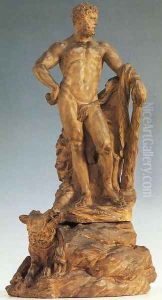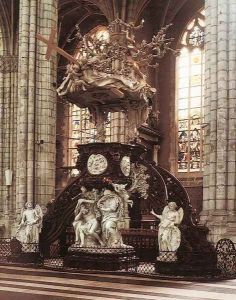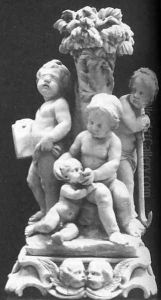Laurent Delvaux Paintings
Laurent Delvaux was a prominent sculptor of the 18th century, born in Ghent, then part of the Spanish Netherlands, on 1696. His body of work straddles the late Baroque and early Neoclassical styles, reflecting the transition in European art from the ornate to the more restrained. Delvaux's career was marked by significant periods in the Southern Netherlands, England, and Italy, which were crucial in shaping his artistic development and output.
Delvaux's early training in sculpture began in his hometown, but his talent soon necessitated further study abroad. In 1717, he moved to England, where he worked under the noted sculptor Michael Rysbrack. This period was instrumental in exposing Delvaux to the emerging Neoclassical style, which was beginning to take root in England. However, it was his subsequent move to Rome in 1725 that profoundly influenced his artistic direction. In Italy, Delvaux was exposed to the masterpieces of antiquity and the Renaissance, absorbing the classical ideals that would inform his later work.
Upon his return to the Southern Netherlands in 1728, Delvaux embarked on a successful career, receiving commissions from churches, monasteries, and private patrons. His sculptures, often characterized by a harmonious blend of dynamism and serenity, earned him widespread acclaim. Among his notable works are the statues in the Park of Tervuren and his contributions to the Saint Bavo Cathedral in Ghent.
Delvaux's style evolved over the years from the Baroque's emotional intensity to the Neoclassical's calm rationality, reflecting broader shifts in European art. Despite this evolution, his work consistently exhibited meticulous craftsmanship and an acute sensitivity to form and detail. Delvaux's legacy lies not only in his contributions to the development of sculpture in the Low Countries but also in his influence on the next generation of artists. He passed away in Nivelles in 1778, leaving behind a body of work that continues to be celebrated for its elegance and expressive power.


